Mowing is the most basic activity for maintaining your lawn. It contributes greatly to the appearance and curb appeal of your lawn and is essential to its’ health and density as it stimulates the plants to produce new grow. By following a few simple guidelines, you can make your lawn immediately stand out without adding any time to your mowing routine. I’ll start off with some tips on equipment, followed by some general recommendations on how to mow.
What Equipment do you Need?
The basic equipment needed to mow your lawn to a high standard is a mower, a string trimmer (AKA a weed eater/whacker) and a blower (or broom). Hearing protection and safety glasses are also recommended.
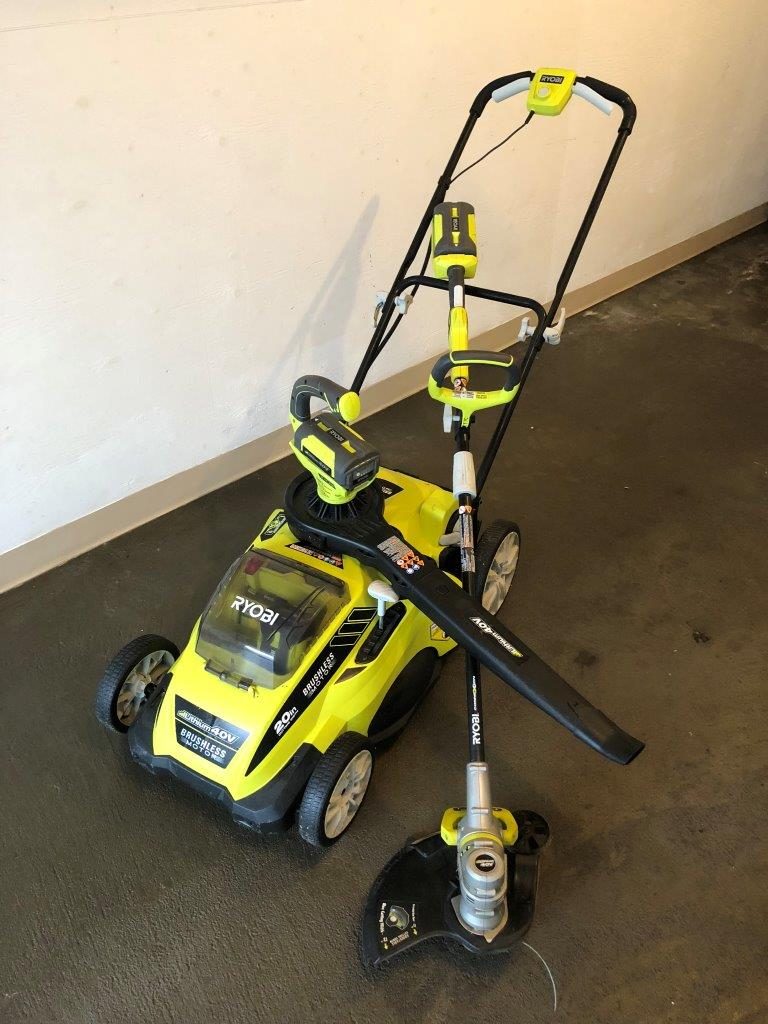
Keep your Blade Sharp
The key to a good cut with any type mower is to use a sharp blade. Dull blades tear rather than cut the grass, which weakens the grass and makes it more vulnerable to disease, as well as giving the lawn a frayed, brownish look.
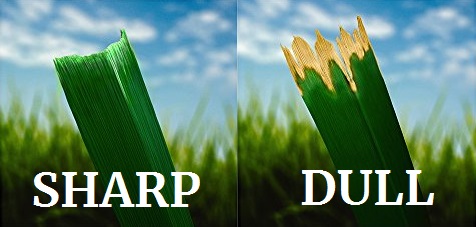
Take a close look at the grass blades a few days after mowing. If the mower blade is dull you’ll notice a jagged brown line across the tip of them. This is a good indication that your blade needs sharpening. The frequency of sharpening is up to you. Many professionals sharpen their blades daily. For most homeowners, twice a year is recommended. I find the best way to sharpen a lawn mower blade is using a flat file. Grinders work faster but they can easily take off too much material. Try to maintain the factory blade angle and then use a blade balancer to check the balance. This reduces vibrations. Check out this video for more tips on sharpening your blade: https://youtu.be/qFusHPPmOFo?t=12
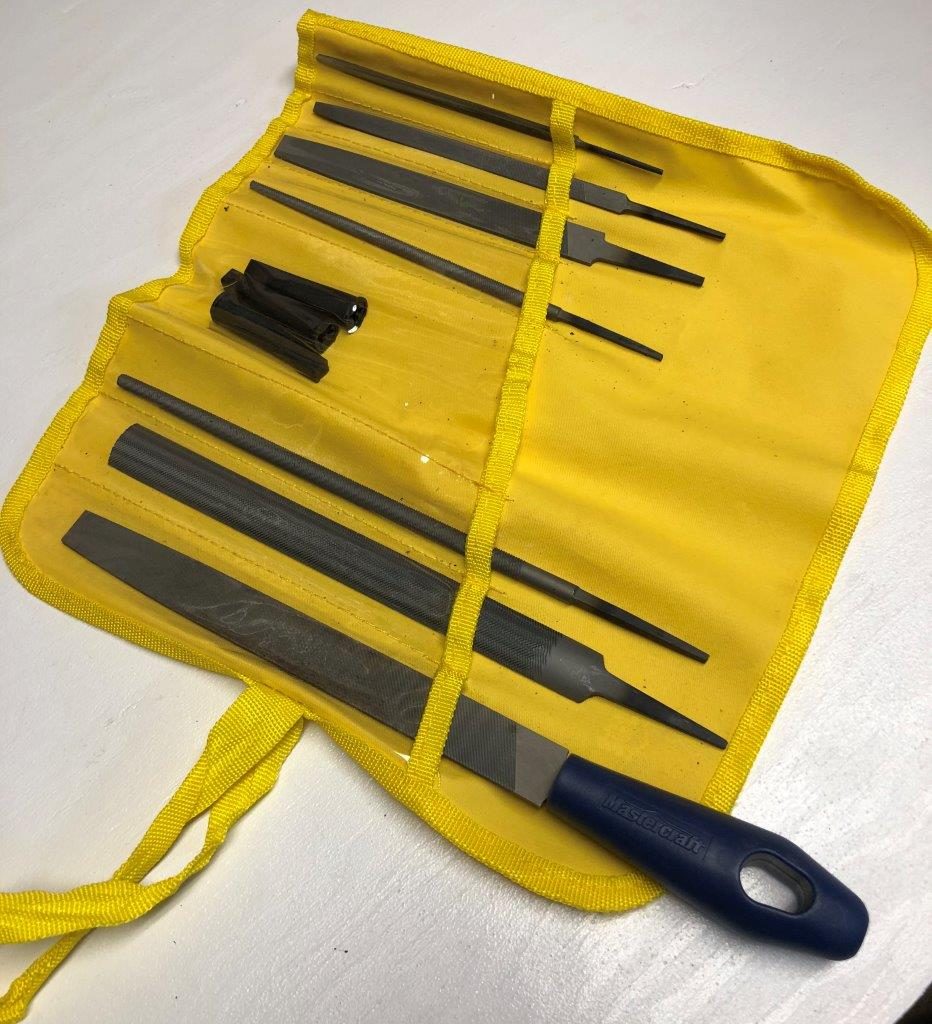
It’s easier to remove a blade from an electric mower as you can flip it upside down. If you have a gas mower only tip it on it’s side, keeping the side with the air filter facing up, to prevent oil or fuel spills. Inspect the blade after you remove it. Cracked or bent blades need to be replaced. A tip for added convenience is to keep a sharp, spare, blade on hand. Then you ‘ll have the option to quickly swap them out when needed.
What should you wear when mowing the lawn?
Always wear eye and hearing protection and don’t wear loose clothing or mow in sandals or bare feet.

Maintain Equipment with Periodic Checkups
Take care of your lawn equipment, both before and after the growing season, and after every mow. This insures that your mower will work as it’s supposed to, without damaging the grass. Use your blower, or a hose, to remove clippings from your mower after every mow. And remember to never work on the mower or deck while the engine or motor is running.
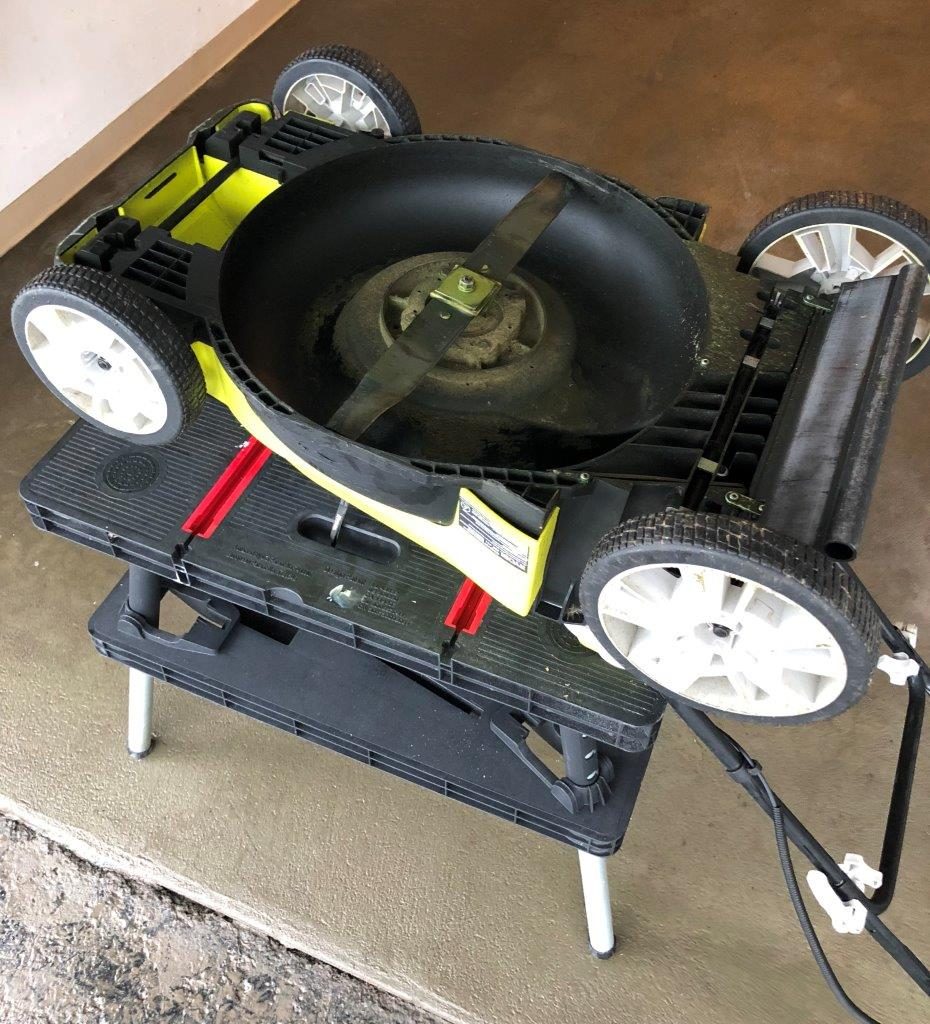
STEPS TO MOW
1. PREP – Before starting to mow, check the lawn for rocks, branches or other debris. This is also important for not dulling your blade. Make sure the area is clear of people, children and pets as well.
Do you trim or mow first?
It doesn’t really matter whether you trim or mow first. I prefer to mow first, as you’ll know exactly which areas the mower is unable to reach, so it saves a bit of time trimming
2. MOW – Mowing the lawn itself is pretty straight forward. Set a straight line and go back in forth in rows from one side to the other. Slightly overlap the area you’ve already mowed on your next pass. This cuts down on missed areas which saves time in the long run.
Take your time. Speed should be adjusted relative to the smoothness of the terrain and the thickness/height of your lawn. If you have a bumpy lawn and you’re moving quickly, the mower will jump around, resulting in an uneven cut. Check out my article on how to level your lawn. You’ll also want to make sure you’re moving at a speed your mower can handle. If you have a particularly thick or tall lawn, your mower may struggle at higher speeds. You can tell how your mower is performing by listening for drops in engine RPM or mower speed. A bogged down mower tends to get clogged up with clippings as the blades aren’t mowing fast enough to clear them.
Change your mowing pattern between cuts. To prevent wheel ruts and wear patterns, the direction and pattern of your mowing route should be alternated periodically (every other mow or every couple of weeks). For example, parallel rows one mow, followed by perpendicular the next.
Regarding slopes, riding mowers handle them best going up and down (to avoid tipping). Push mowers are usually best traveling across slopes.
3. TRIM – Trimming is by far the number one mark of a lawn that looks truly professional. Using a string trimmer, start with the areas you weren’t able to reach with your mower. Then, turn your string trimmer vertical on it’s edge to go around the perimeter of the lawn, any patios, decks, flower beds, posts, tree pits, etc. Some trimmers, like the one below, are able to rotate 90 degrees to make this easier. If yours doesn’t have this feature, just angle your trimmer accordingly. It takes time to learn how to do this quickly and precisely, but trust me, your energy will be well spent.
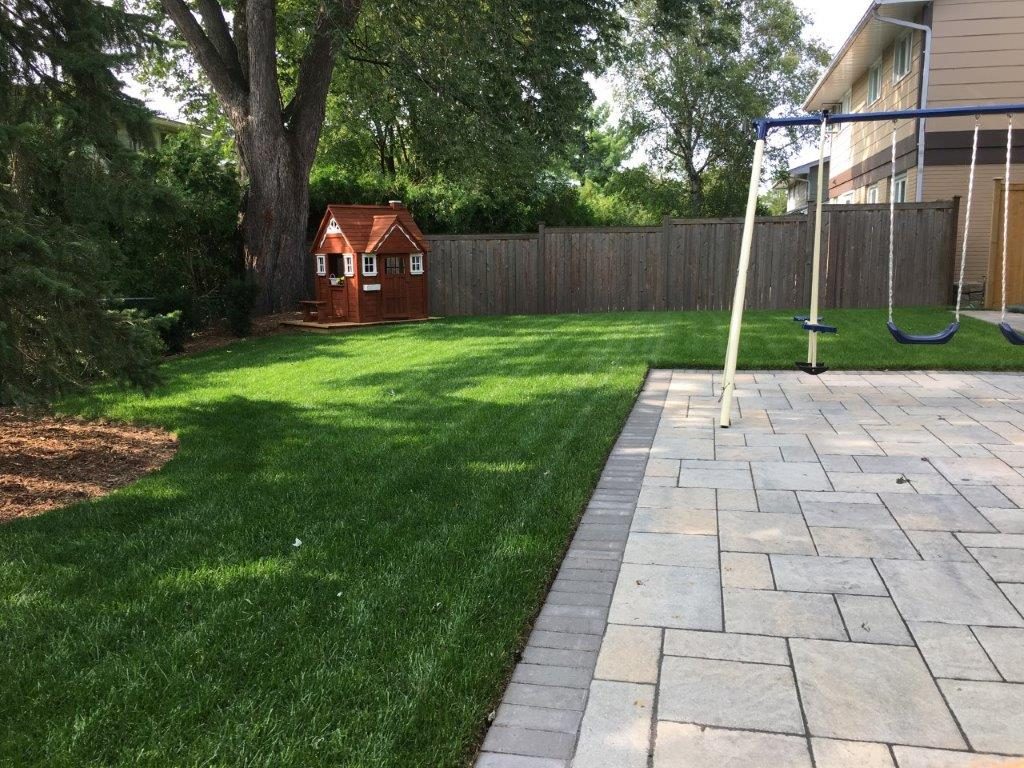
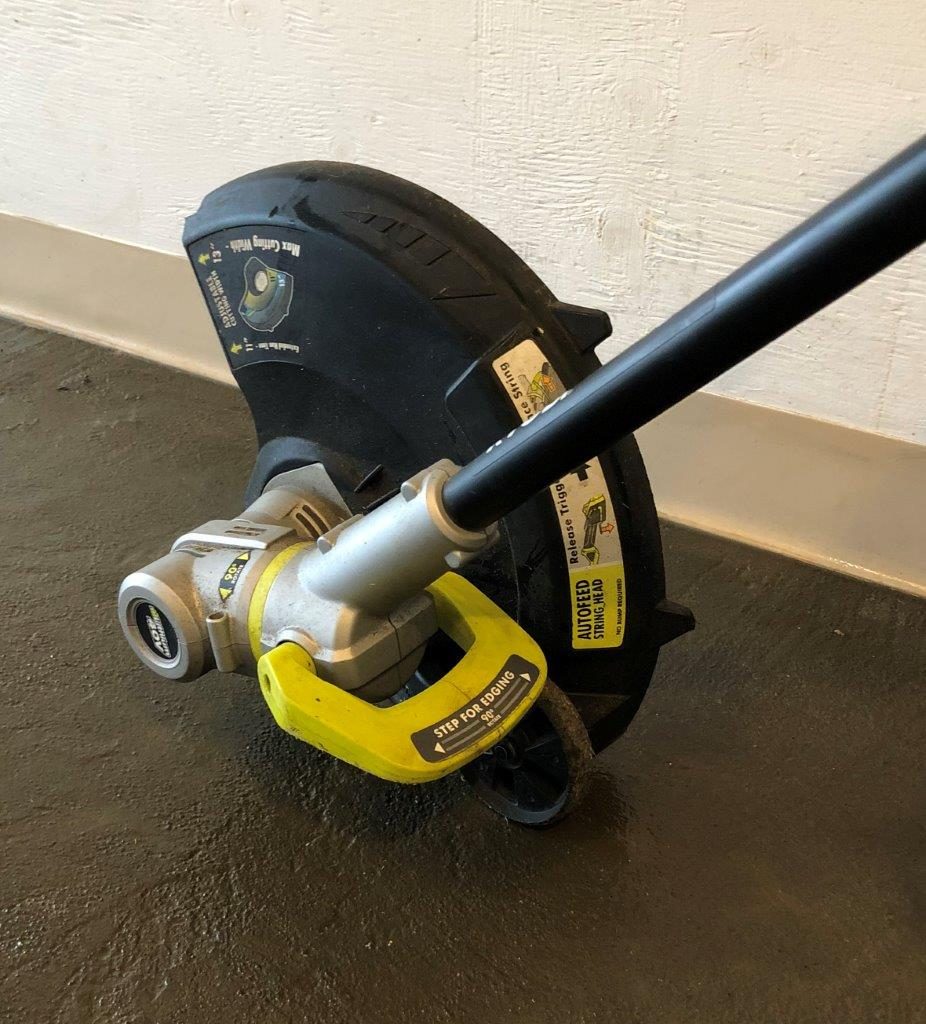
Mowing Around Trees
Repeatedly bumping a mower up against your trees or hitting them with your trimmer each week can seriously damage the bark and the tree itself. Over time, the damage can be enough to eventually kill young trees. I recommend you install tree pits around your trees to protect them and make mowing easier. To do this, remove the grass from an approximately 3 feet diameter around the trunk. Put a nice edge around the perimeter with an edging tool, and then maintain it with your trimmer. Cover the soil with a thick layer of mulch to inhibit weed growth and retain moisture.
4. BLOW – Last is the cleanup, which is also very important. Sweep or blow clippings off walkways, driveways and streets back onto lawns. Grass clippings are full of nutrients – they are basically fertilizer – and when left on sidewalks, driveways or the road they will wash into storm drains, which is an environmental concern. I highly recommend doing this with a blower – it does a better job than a broom and does it a lot faster. Check out my article on Top 5 Cordless Blowers of 2018. This is a tool I use almost every day. If you don’t have one, you need to get one right now.
Mowing at the Right Time of Day
Mowing at the right time of day, especially in the summer months, increases the lawn quality, decreases weeds and disease and keeps up a lawn’s appearance.
Is it better to mow in the morning or evening?
For the best cut, mow in mid to late morning, when it’s cool but the morning dew has dried off. The act of mowing creates stress on your grass. If you mow during the heat of the day, individual plants lose more water and recover much more slowly than if you mow during the cooler part of the day, or when the lawn is shaded. Grass in the shade loses less water when cut and is quicker to rebound.
Can you mow the lawn when there’s dew?
Wet grass simply doesn’t cut as well as dry grass. Some of the clipping will stick to your mower, and leave clumps on the lawn, which smothers the grass beneath. Wet grass is also more likely to suffer uneven cuts, which increases chances for disease. Sometimes mowing when it’s wet is unavoidable, whether it be your work schedule or persistent bad weather. In these cases, simply take your time and bag clippings if possible.
How High Should you Mow your Lawn?
One of the most fundamental steps to a perfect lawn is getting the mowing height right for your type of lawn and for a particular season. Generally speaking it’s best to leave your grass as long as possible. Leaving grass longer helps it process light and water better, which in turn leads to a fuller, more attractive lawn, by virtue of having a strong root system. It can also have a dramatic shading effect on the soil surface, which helps retain moisture and reduces germination of weed seeds, particularly crabgrass.
Lots of people publish recommended mowing heights, however I think it’s best to listen to your lawn. Let it grow as tall as it can handle without toppling over or getting matted. I usually cut mine between 3 and 3 ½ inches.
Current standards suggest between 2 and 3 ¾ inches. If you are growing cool-season grasses, your first mowing should be at a lower height, around 2 inches. In the following weeks, raise your mower one notch at a time until you reach your desired height. During the summer it’s especially important to keep your grass a bit taller, so it’s better able to deal with the heat.
As the season winds down, start to reduce your mowing height again, which helps your lawn throughout the winter, allowing it to green up quicker in the spring. Cutting height can usually be adjusted by raising or lowering a mower’s wheels. Look on the side of your lawn mower to find latches or switches that allow you to adjust the deck height.
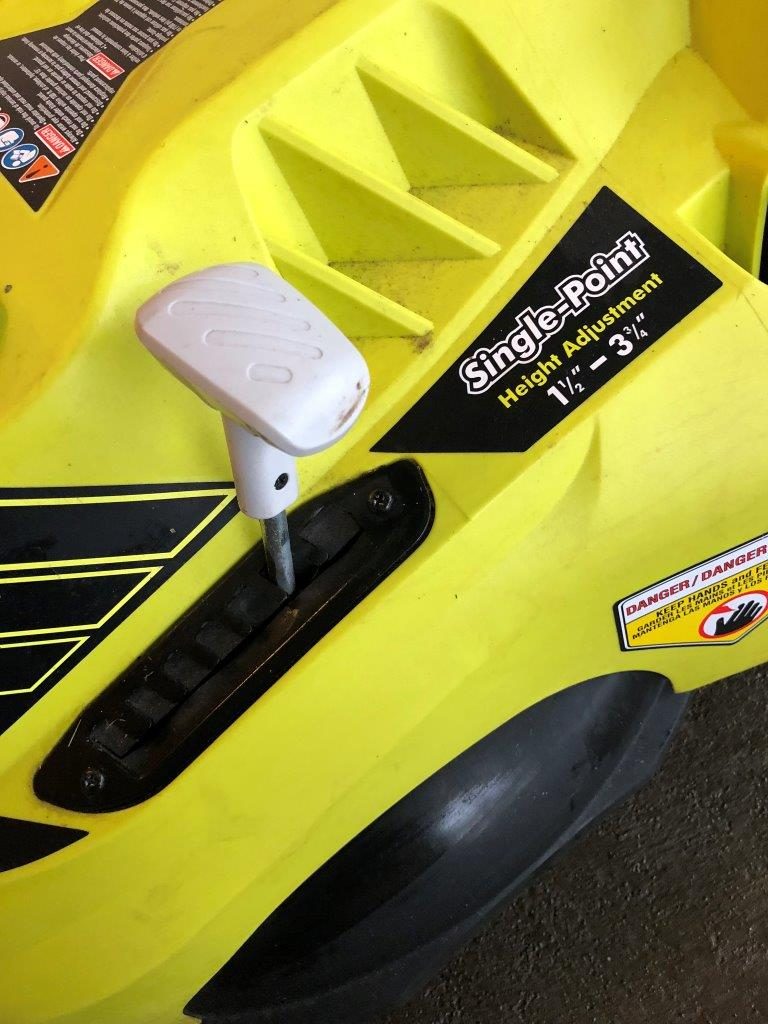
How to Measure Your Cut Height?
Some mowers have cut height measurements listed right on the mower, however I have found that a lot of them don’t and those that do often aren’t accurate. I suggest measuring your cut height setting manually so that you know for sure. To do this you need to park your mower on a flat surface and take two measurements. One from the ground to the bottom of the mower deck and one from the bottom of the mower deck to the blade. Ref the pictures below. Add these two up and that’s your cut height.
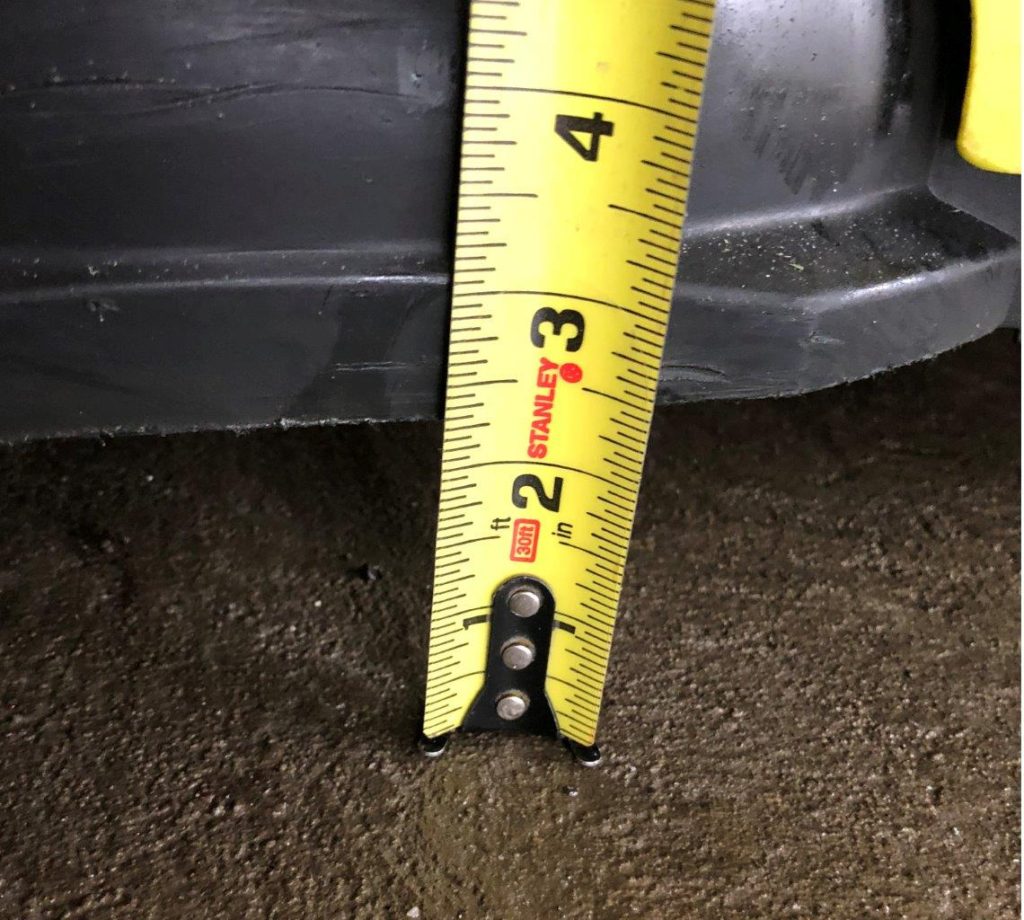
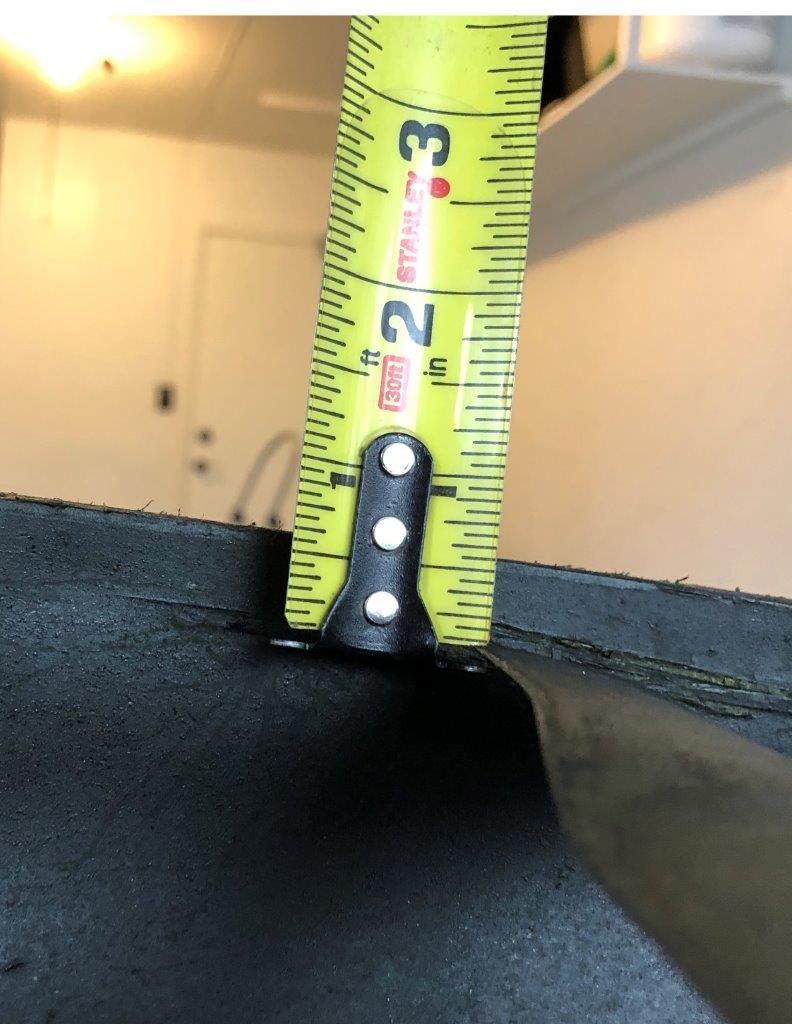
How Often Should I Mow my Lawn?
The main consideration for mowing frequency is the one third rule. Never remove more than one third of the blade length in a single cutting. “Removing more than one-third of total leaf surface can severely injure the grass plant by decreasing its ability to support its underground portions.” Source: MSU Extension
How often you mow your lawn will therefore be dictated by how fast your grass is growing. You may have to mow every three to four days during the spring/early summer when the grass is actively growing. But only once every seven or more days when growth is slowed by heat, drought or cold.
Trimming Turf Too Short
Mowing too low restricts the ability of the plant to absorb water and nutrients. It’s tempting to cut off as much as you can, but make sure you follow the one third rule. Mowing lower than the recommended height is known as scalping, and it sends grass into shock. Short blades can’t deliver enough energy to the roots, weakening the plants. Without a deep, vigorous root system, turf is less equipped to handle drought and compete with weeds and other pests. Trimming turf too short can also result in an over accumulation of clippings which may smother the turf.
Should I Mulch or Bag my Clippings?
What is Mulching?
Mulching is the practice of leaving the clippings on the lawn after you mow, once the blade has chopped them finely. This not only saves time, but the clippings decompose and add important nutrients back into the soil. In fact, “returning grass clippings means that nitrogen applications can be reduced by as much as 1 pound per 1,000 square feet per year.” This equates to approximately one full fertilizer application. Free fertilizer.
Most mowers are capable of mulching, but some are better at it than others. Some mowers are designed to improve mulching by virtue of their blade design and how they contain the clippings. When using a mulching blade, be sure to install the discharge chute plug to block grass or any projectiles from flying out.
Can I use my Clippings for Garden Mulch?
Allow at least two weeks after applying weed control products before using clippings as garden mulch. These clippings can also be put into compost. “The weed control products will degrade quickly during the composting process.” Source: MSU Extension
Can I Always Mulch?
There are a few times per year when it’s better to bag your clippings: when cutting tall grass, when the grass is wet, or when cutting a newly seeded lawn. “A common misconception is that frequent mulching will promote thatch buildup. This is not true. Clippings do not make significant contributions to thatch.”
Is it OK to Mow over Leaves?
Mowing, rather than raking, your leaves in the fall is an excellent time saving tip that also adds some nutrients to the soil. “Studies have evaluated the effects of mowing tree leaves into lawns. In these studies, up to 6 inches of various types of tree leaves were mowed into lawns. No adverse effects were detected on the lawns.” Source: MSU Extension
I prefer to limit this practice to small quantities of leaves as it tends to create a bit of a mess when there is a thick layer of leaves. Simply make one or two passes over the leaves and it will break them down into small pieces. Some residue will remain but this will dissipate after a few days. It’s much easier to do when the leaves are dry.
What is the Fastest Way to Mow a Lawn?
Many people want to how to most efficiently mow their lawn. Obviously to accomplish this, you need to first ensure you’re not going over the same patch twice. Now, assuming you have a push or zero-turn mower, what it comes down to is which mowing pattern requires more turns? The two fastest approaches are row (the most common pattern) and spiral. Source: Popular Mechanics
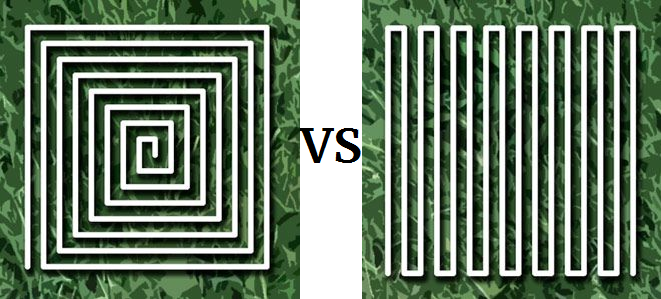
Using a 16 x 16 ft lawn as an example, both the spiral and row techniques take a total of 30 turns – 14 left and 16 right for rows, and 30 right turns for the spiral. There’s no pattern with fewer turns that mows the whole area. With this in mind, I would suggest mowing in rows, as I think most people would find the result to be more aesthetically pleasing.
CONCLUSION
Remember, always mow with a sharp blade, mulch your grass clippings, don’t cut in the same direction every time, mow high, listen to your lawn, and don’t remove more than 1/3 of growth. Last of all, enjoy! Let me know if you have any tips below. Cheers.
Check out my recommended mowing gear here!


Comments
Thank you for explaining that it is a good idea to take care of your mower before and after the growing seasons. This week, I want to go to an outdoor store to purchase a lawnmower that is easier to use since I have a large yard. These tips you shared will help me make sure that my new mower will last a long time.